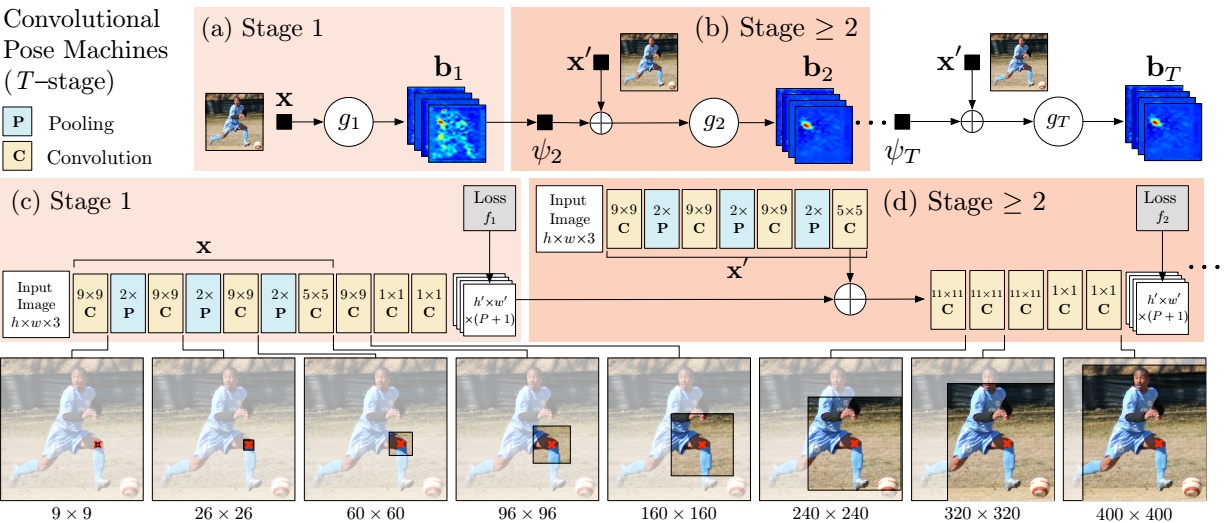TITLE: Convolutional Pose Machines
AUTHOR: Shih-En Wei, Varun Ramakrishna, Takeo Kanade, Yaser Sheikh
ASSOCIATION: CMU
FROM: arXiv:1602.00134
CONTRIBUTIONS
- learning implicit spatial models via a sequential composition of convolutional architectures
- a systematic approach to designing and training such an architecture to learn both image features and image-dependent spatial models for structured prediction tasks, without the need for any graphical model style inference.
METHOD
The following figure shows the comparison of traditional Pose Machine and Convolutional Pose Machine

Pose Machines
A pose machine consists of a sequence of multi-class predictors, g t (⋅) , that are trained to predict the location of each part in each level of the hierarchy. In each stage t∈{1...T} , the classifiers g t predict beliefs for assigning a location to each part Y p =z,∀z∈Z , where Z is the set of all locations in an image.
As illustrated in the figure (a) and (b), the image is first sent to
Stage
1
and a belief map is predicted. Then the belief map and image features
Convolutional Pose Machines
Convolutional Neural Network is naturally a sequence of stages if multiple losses and predictors are inserted at the intermediate layers. The (c) and (d) in the figure illustrated a convolutional pose machine. The sub-network in (c) plays the role of first stage. The shared network at the top-left corner in (d) is used to extract image features
When training, every stage has its own loss function to predict parts. These losses work similar with the auxiliary classifiers in GoogleNet, which helps alleviate the problem caused by the vanishing of gradient. The network can be trained end-to-end. Compared with traditional pose machine, CMP is much easier to train. The visualization of the network can be found here























 737
737











 被折叠的 条评论
为什么被折叠?
被折叠的 条评论
为什么被折叠?








